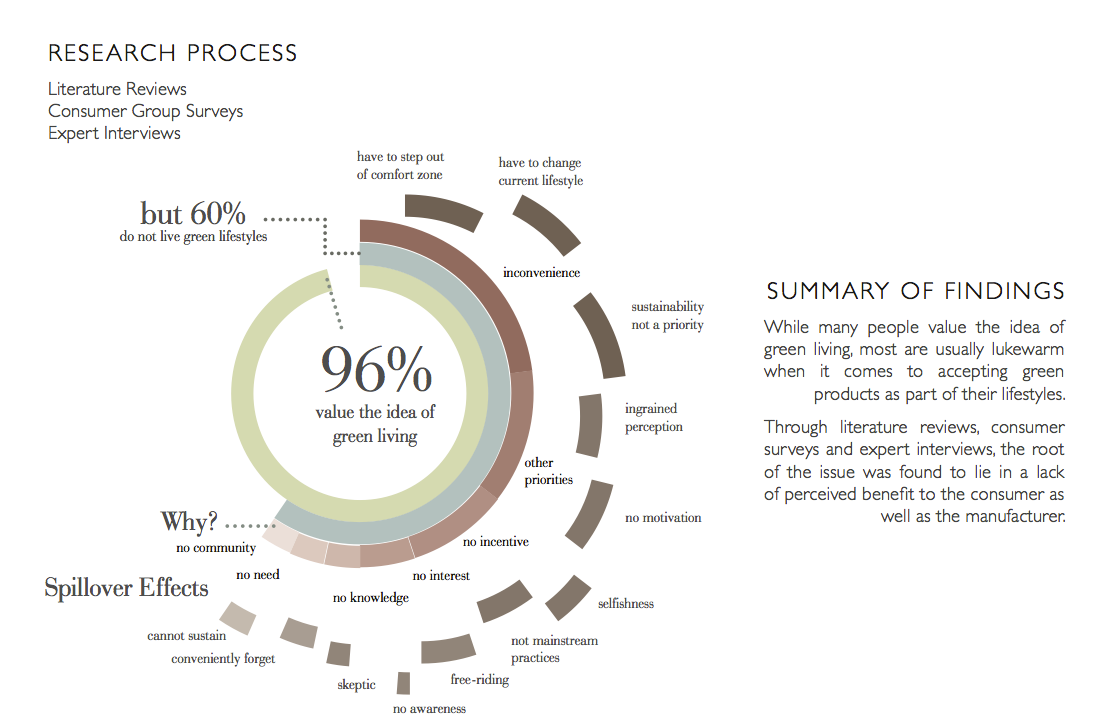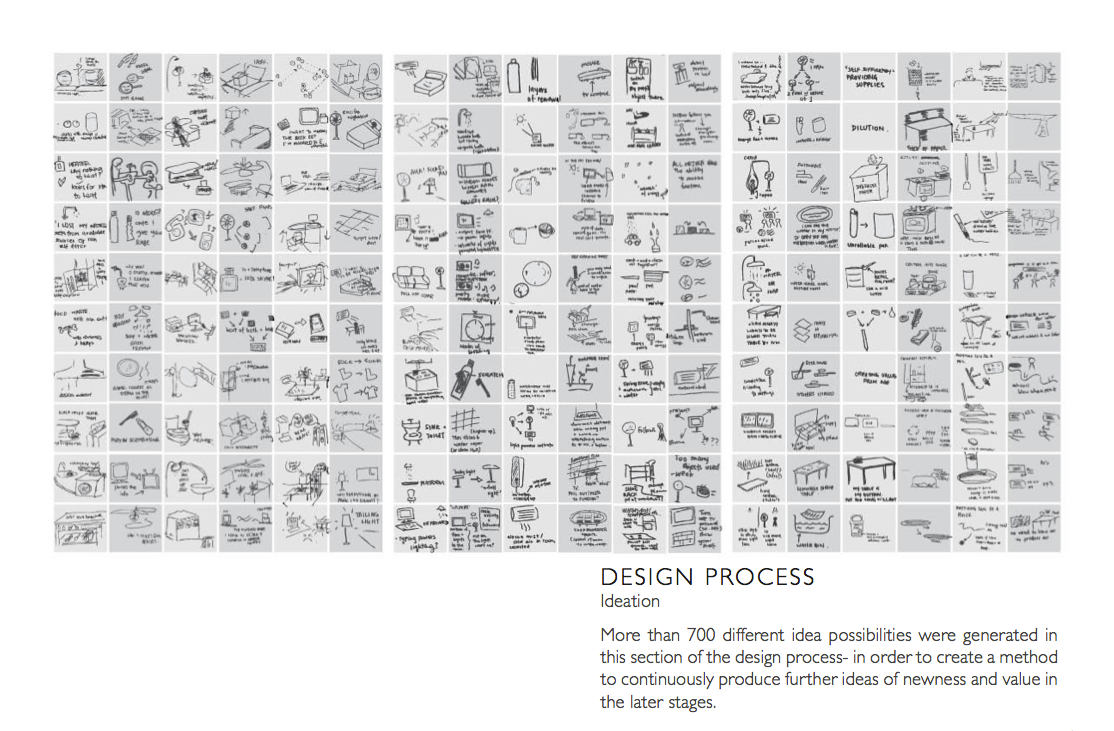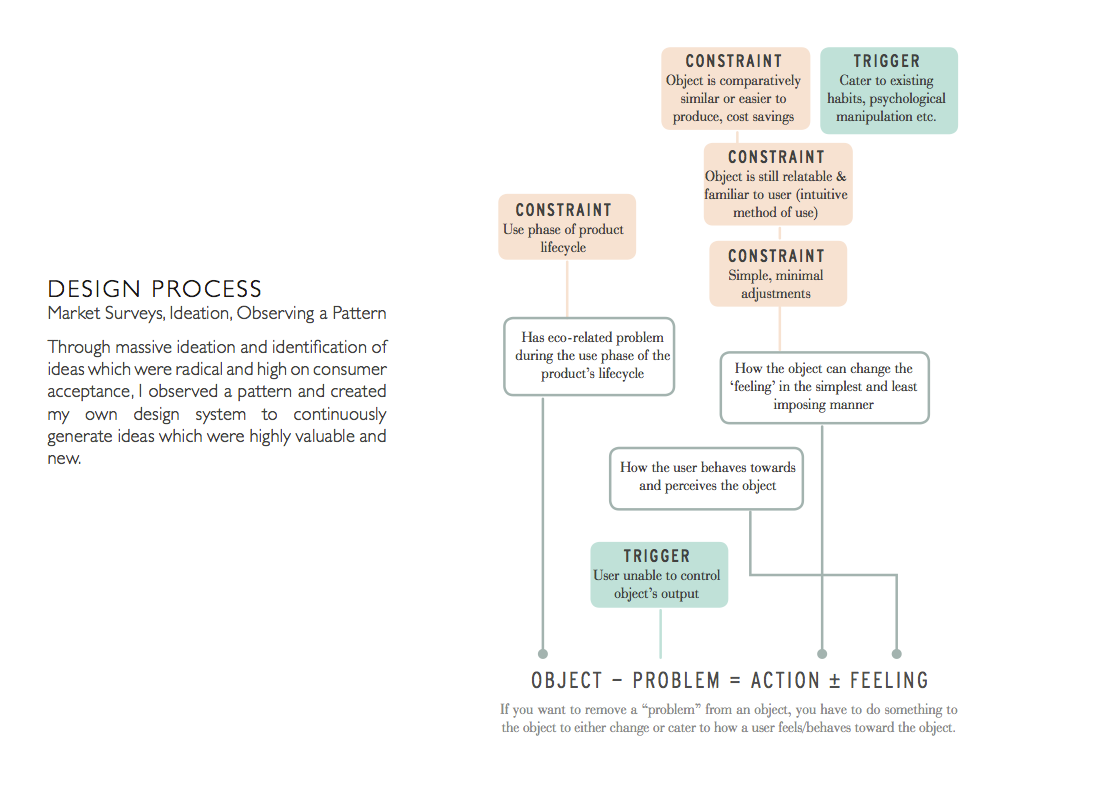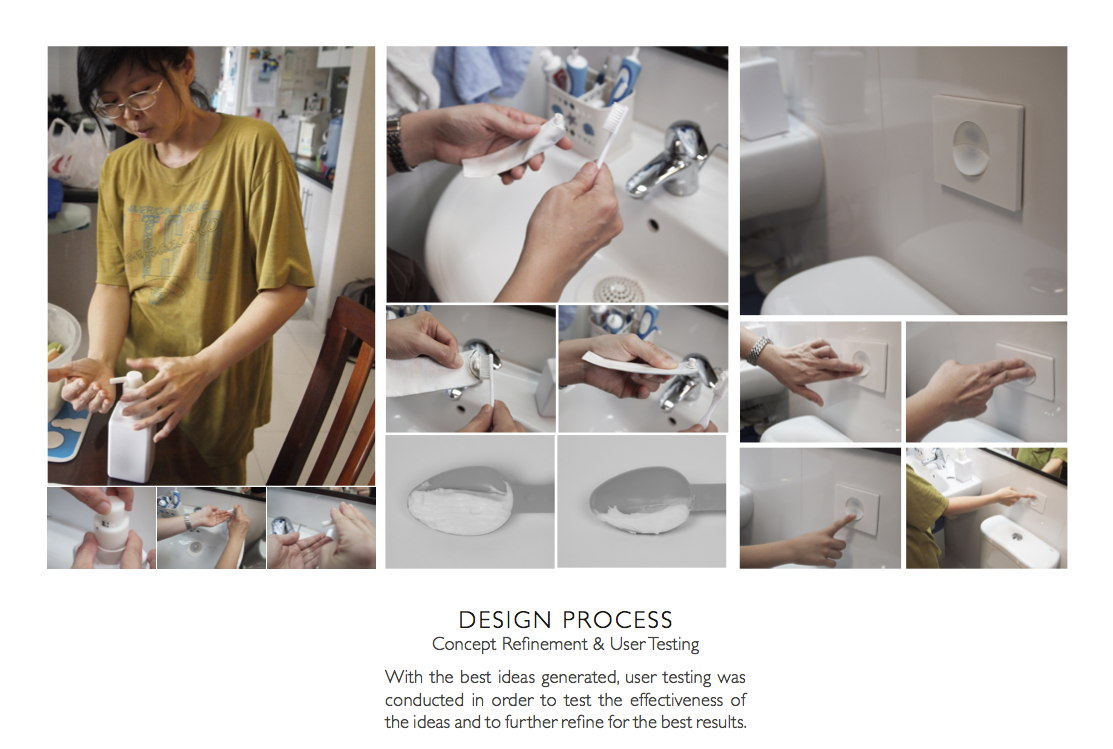NATURAL BY DEFAULT
Industrial Design Honours Thesis Project
Thriftiness, or the desire to save resources, is a behaviour characteristic of ecologically sustainable living. Though many consumers value this trait, their behaviour is often limited to the affordances of daily objects that do not consider economical usage in their design, but are still widely accepted by consumers due to their established familiarity and reliability. Coupled with the manufacturers' reluctance to adopt new products and manufacturing processes where cost is a factor, this results in a magnified inertia towards the habit of saving.
Natural by Default presents a series of objects in the bathroom that enable the pre-existing 'savings' behaviour, through minimal changes in design and methods of production, to maximize both consumer and manufacturer acceptance.
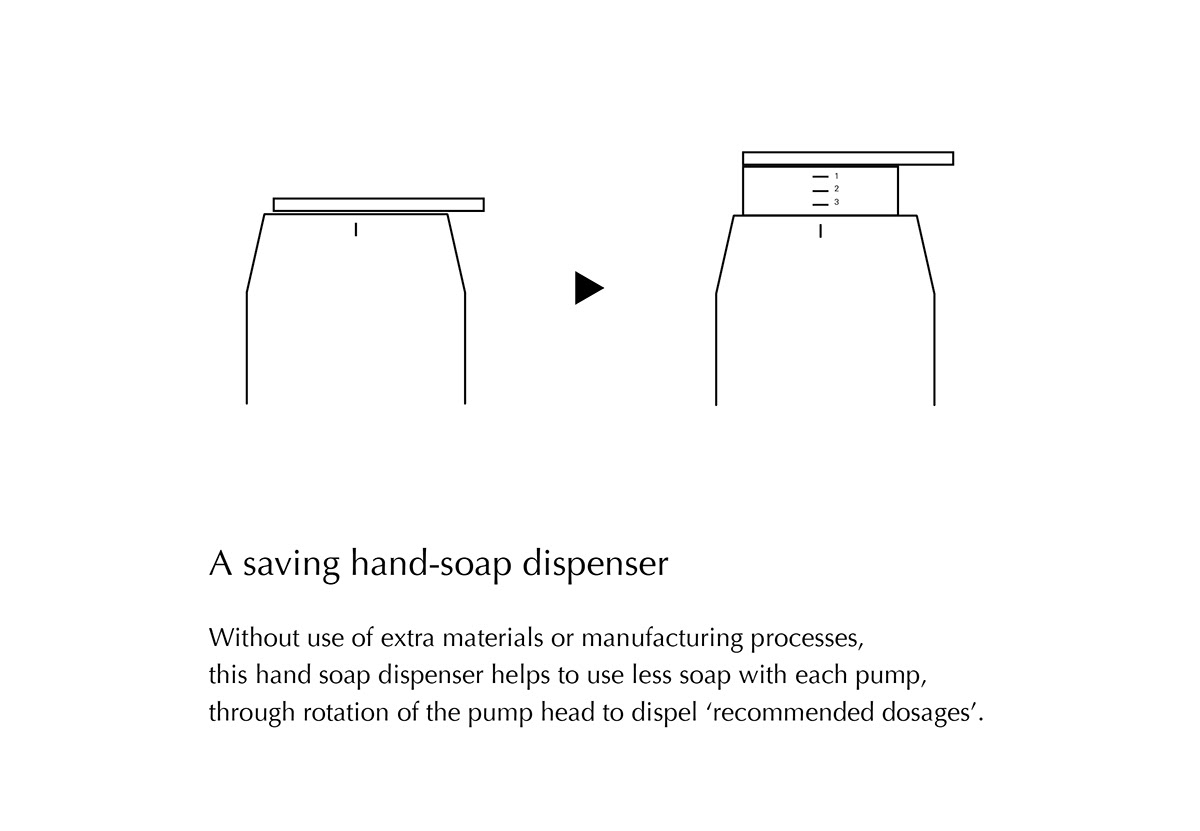
#1
"Usually we pump out more soap than required when washing our hands."
This idea relies on the original motion of having to twist the dispenser cap of a newly purchased soap bottle in order to use it, and translates it into a function to control the amount of soap being dispensed. By twisting from the bottom up, users would start from the most minimal and use ‘just enough’, rather than using ‘more than enough’.
This context could be extended to apply to cosmetic packaging, where the idea of "recommended dosages" could help effectiveness of use, or in kitchen and bakingware to preset the amount of ingredients used.
"Usually we pump out more soap than required when washing our hands."
This idea relies on the original motion of having to twist the dispenser cap of a newly purchased soap bottle in order to use it, and translates it into a function to control the amount of soap being dispensed. By twisting from the bottom up, users would start from the most minimal and use ‘just enough’, rather than using ‘more than enough’.
This context could be extended to apply to cosmetic packaging, where the idea of "recommended dosages" could help effectiveness of use, or in kitchen and bakingware to preset the amount of ingredients used.
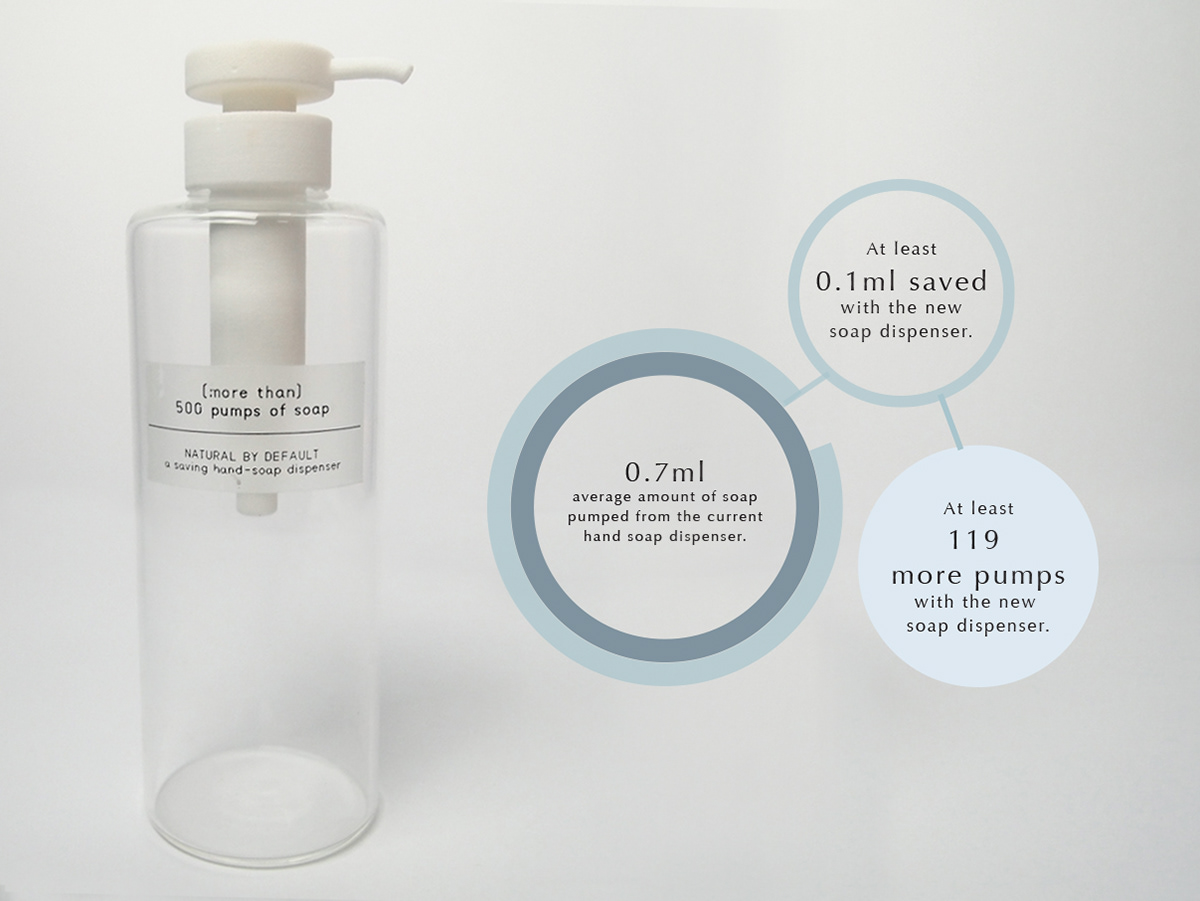
For the users: Even a slight 0.1ml adjustment of the pump can allow users to wash their hands at least 119 more times.
For the manufacturers: One less component to manufacture, optimization of transport and storage space.
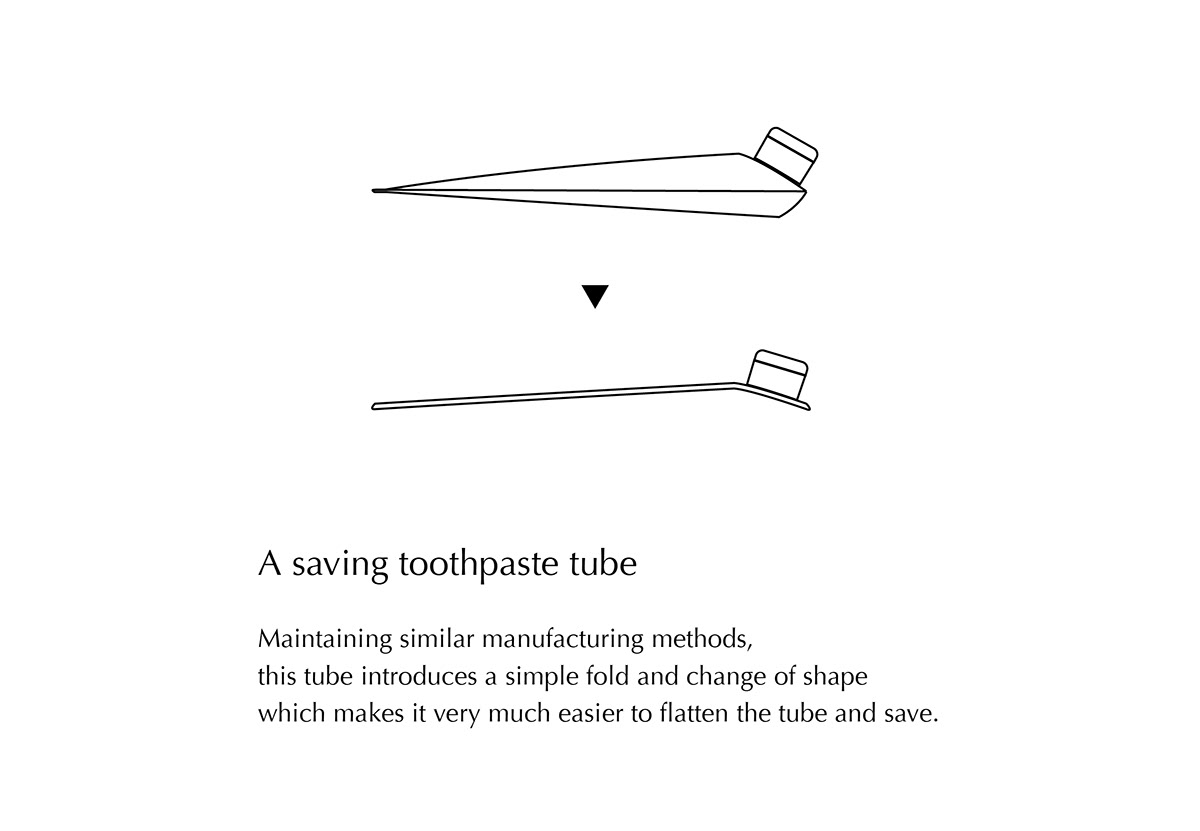
#2
"There is always a stubborn bit of toothpaste left in the tube that cannot be squeezed out."
"There is always a stubborn bit of toothpaste left in the tube that cannot be squeezed out."
This idea was formed through observations that most users wished to completely empty the tube, yet the current design made it unable to do so. If the tube’s design provided the ability to save (use up every last bit), users would naturally save.
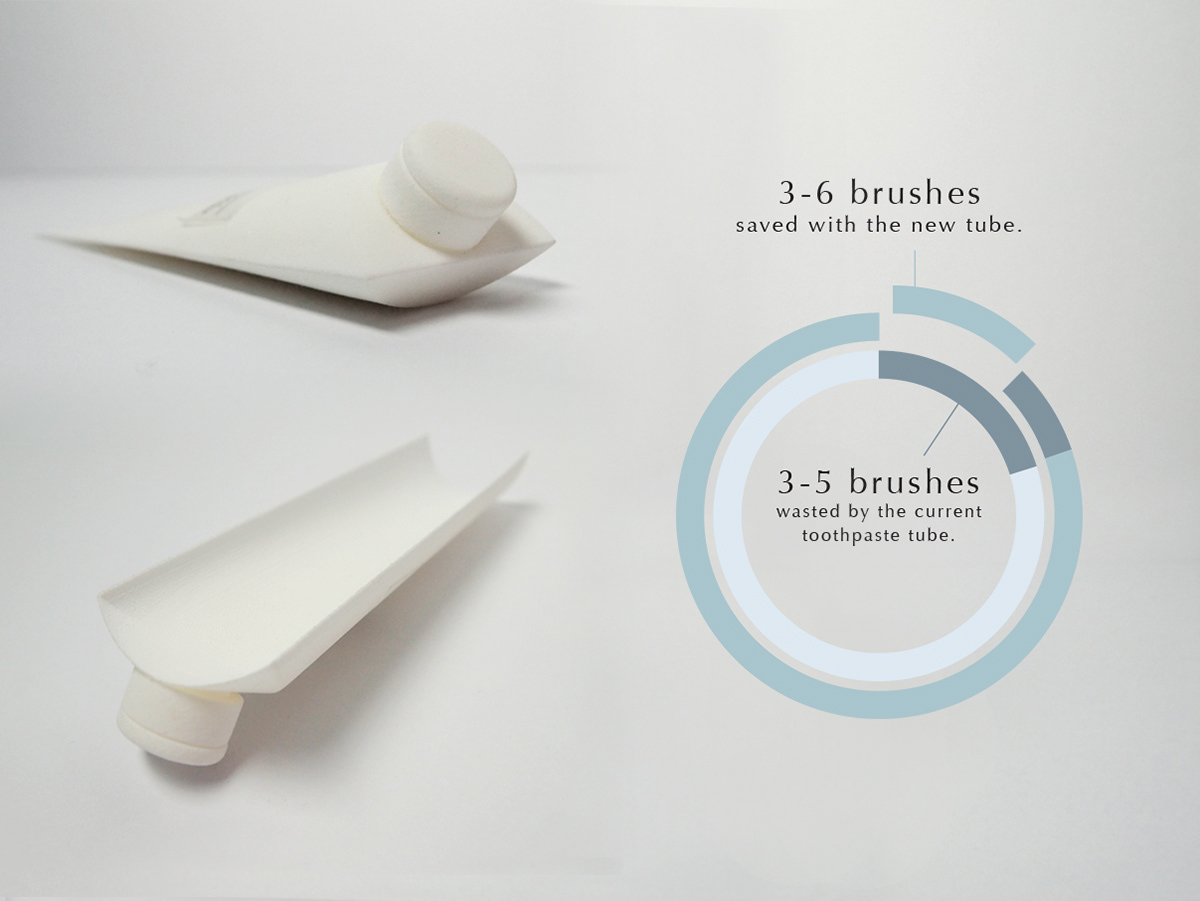
For the users: Automatically, their savings behaviour is enabled as it is now easier to empty the tube.
For the manufacturers: A reduction of material, beneficial in the long run. Manufacturing process is also kept as similar as possible to the original design.
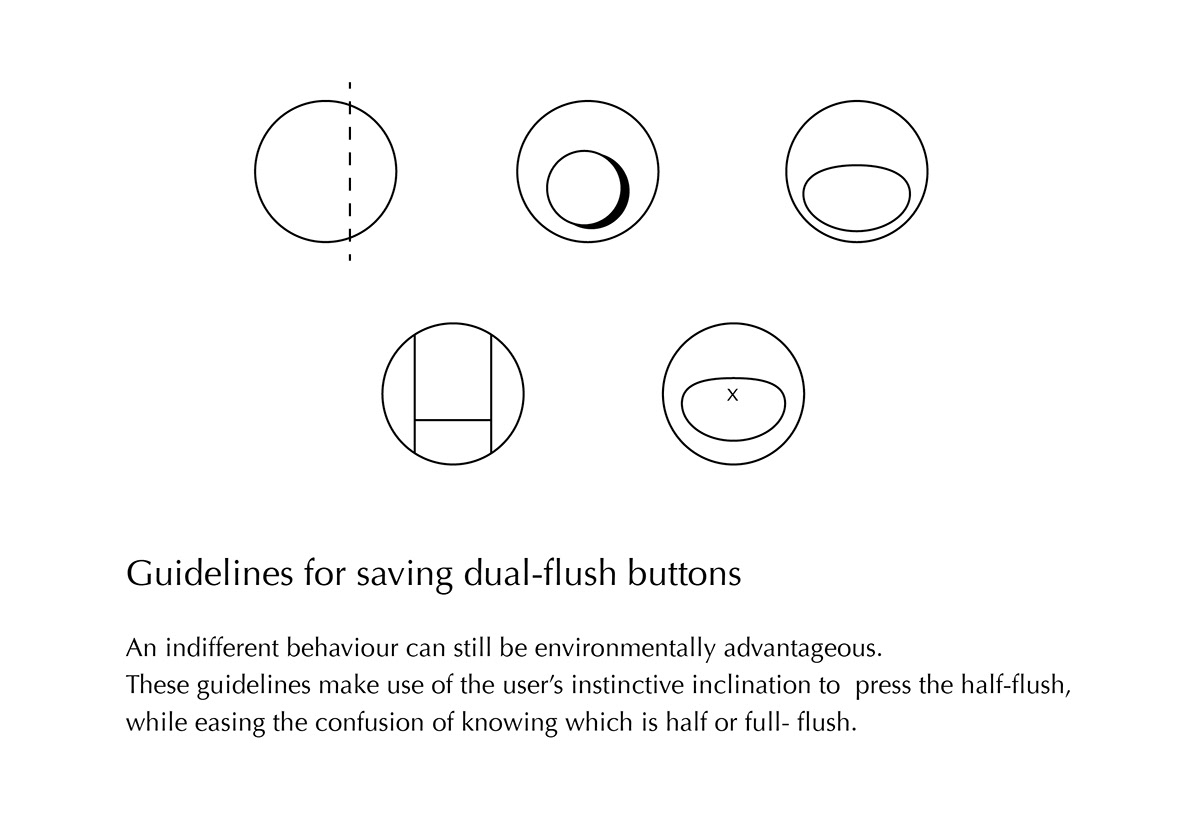
#3
"The Flush-and-Go Attitude."
"The Flush-and-Go Attitude."
Toilet goers want to flush and leave in the shortest time possible. When the dual-flush button presents them with a choice of button to press, their instinctive tendency to conveniently press the ‘bigger’ button (the full- flush) most of the time triggers an inability to control the type of flush they require.

Guidelines:
• The bigger button must always be the full flush and the smaller button is always the half flush.
• The half flush button must be significantly elevated in relation to the full flush to make it more ‘pressable’.
• If the design of the half-flush is such that it is ‘embedded’ in the full-flush button, make the half-flush as big as possible without compromising on the ‘pressability’ of the full-flush button.
• If the buttons are mounted on a vertical surface, the elevated half-flush would have a higher success rate of getting pressed if it were below the full-flush button. For horizontal positioning, the elevated half-flush would work better when it lies either on the right or left-hand side of the full-flush.
• When any point on the half-flush button rests on the ‘midpoint’ of the entire button, it will tend have a higher chance of getting pressed.
• The bigger button must always be the full flush and the smaller button is always the half flush.
• The half flush button must be significantly elevated in relation to the full flush to make it more ‘pressable’.
• If the design of the half-flush is such that it is ‘embedded’ in the full-flush button, make the half-flush as big as possible without compromising on the ‘pressability’ of the full-flush button.
• If the buttons are mounted on a vertical surface, the elevated half-flush would have a higher success rate of getting pressed if it were below the full-flush button. For horizontal positioning, the elevated half-flush would work better when it lies either on the right or left-hand side of the full-flush.
• When any point on the half-flush button rests on the ‘midpoint’ of the entire button, it will tend have a higher chance of getting pressed.
THE DESIGN PROCESS
